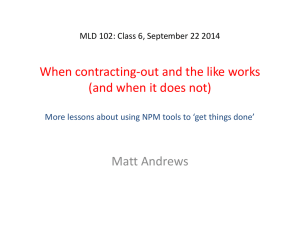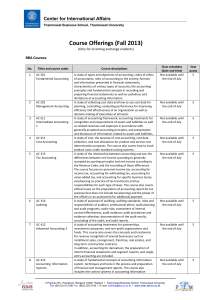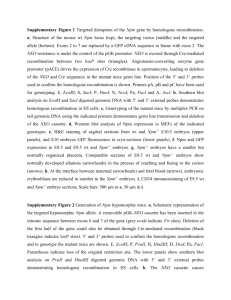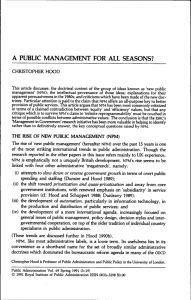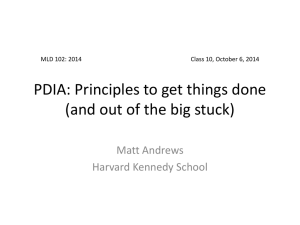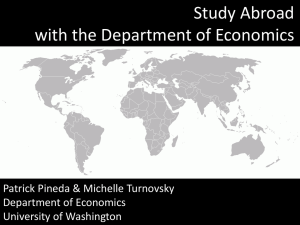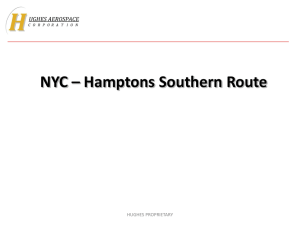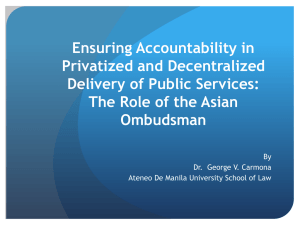New Public Management (NPM)
advertisement
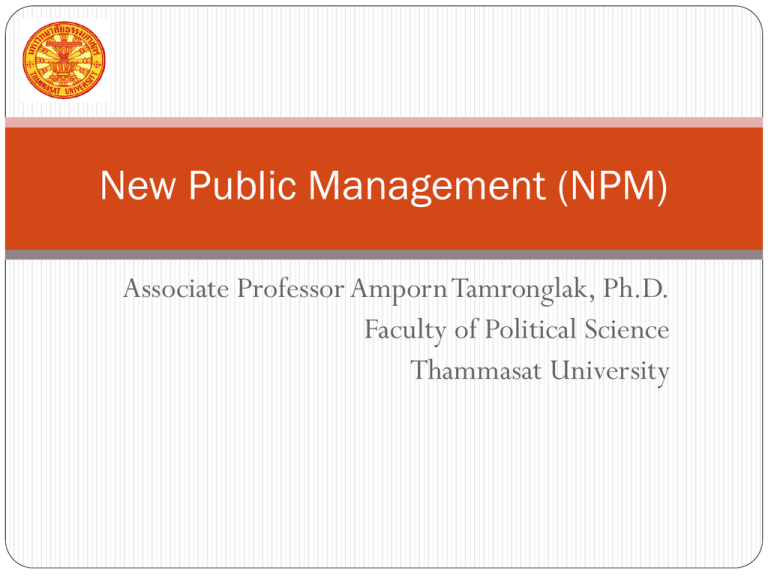
New Public Management (NPM) Associate Professor Amporn Tamronglak, Ph.D. Faculty of Political Science Thammasat University New Public Administration (NPA) vs. New Public Management (NPM) Amporn Tamronglak ® 2 Faculty of Political Science, Thammasat University What is New Public Administration (NPA)? Amporn Tamronglak ® Minnowbrook Conference I, 1968 : from 3E’s to normative theory of public administration 3E’s and social equity, responsiveness and representation Minnowbrook Conference II, 1988 Blacksburg Manifesto Normative theory Constitutional basis Neo-institutionalism: Public Administration Agential Leadership: second citizen Active citizen Authority and dialogue Etc. 3 Faculty of Political Science, Thammasat University New Public Management (NPM) Owen Hughes (1994, 2004) Christopher Pollitt Christopher Hood (1991) Gaebler and Osborne (1992) Jan –Erik Lane New Public Service by Denhardt and Denhardt 4 Faculty of Political Science, Thammasat University Amporn Tamronglak ® Administration vs. Management Administration , Oxford Dictionary:- Amporn Tamronglak ® An act of administering, “to manage the affairs of ” or “to direct or superintend the execution, use or conduct of ” Management: To conduct, to control the course of affairs by one’s own action, to take charge of (Oxford Dictionary) The act or art of managing, the conducting or supervising of something as a business, especially the executive function of planning, organising, coordinating, directing, controlling and supervising any industrial or business project or activity with responsibility for results Management comes form manus, meaning: to control by hand. 5 Faculty of Political Science, Thammasat University Driving forces for change to NPM…1 Attack on the public sector: 3 points I. Amporn Tamronglak ® The scale of the public sector, too large, consuming to manage scarce resources 2. The scope of government, too many activities, leading to private sector--privatization, such as contracting-out 3. The methods of government with bureaucracy, becoming a highly unpopular form of social organization, leading to market principle 1. 6 Faculty of Political Science, Thammasat University Driving forces for change to NPM…2 Amporn Tamronglak ® Change in economic theory in 1970s: 1. Public choice theory: the minimum role of government and maximum role of market forces 2. Principal/agent theory in private sector: the clear accountability of agent (manager) to principals (shareholders) by the contract II. 7 Faculty of Political Science, Thammasat University Driving forces for change to NPM…3 Globalization Competitiveness 8 Faculty of Political Science, Thammasat University Amporn Tamronglak ® NPM Amporn Tamronglak ® Management defined by Hughes as the achievement of results, while administration means following instructions (Hughes, 1994, p. 60) Function of general management by Allision (1982) 1. Strategy: setting objectives and priorities and create operational plans to achieve objectives 2. Managing internal components: organising and staffing, directing personnel, controlling performance 3. Managing external constitutencies (external unite, agencies from other branches or levels of government, interest groups, and private enterprises, the press and public 9 Faculty of Political Science, Thammasat University Hood (1991): 7 points in NPM 1. 2. 3. 4. 5. 6. 7. 10 Amporn Tamronglak ® Hands-on professional management Implicit standards and measures fo performance Emphasis on output controls Disaggregation of units in the public sector Greater competition Private sector styles of management practices Greater discipline and parsimony in resource use, cutting direct costs, raising labor discipline, limiting compliance costs to business:--doing more with less Faculty of Political Science, Thammasat University Hughes (1994): 4 kinds of changes Amporn Tamronglak ® Focus on outputs 2. Changes to inputs: doing more with less, staff cuts, performance indicators with stress on economy and efficiency, short-term appointment, flexible budget, etc. 3. Reducing the scope of government: privatization, contracting-out, tendering competition 4. Relationships with politicians and the public: managers are now closer to the politicians, but the politicians have the final say. 1. 11 Faculty of Political Science, Thammasat University Criticisms on NPM 1. Amporn Tamronglak ® Problem of economic theory Citizens and clients, consumers: the differences between public and private 2. 3. 4. 5. 6. 7. 12 Problem with measurement of results in public sector Neo-Taylorism Politicization Reduce accountability: at arm’s length/indirect accountability Implementation problems in performance management Unclear specification : no clear definition of NPM Faculty of Political Science, Thammasat University Amporn Tamronglak ® Thank you.


